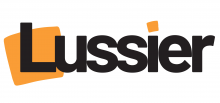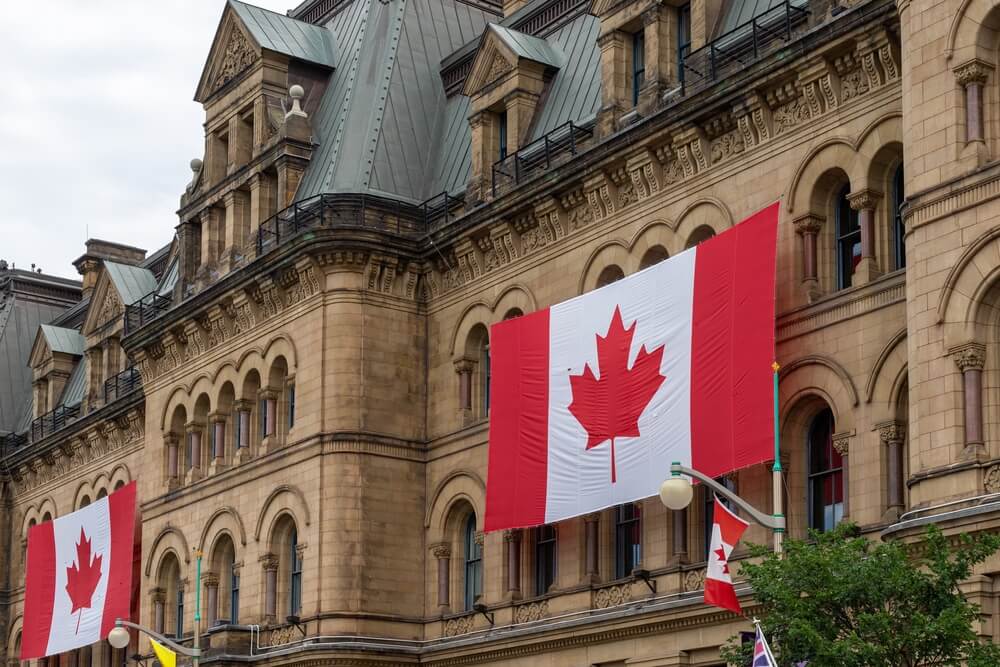Royal Bank of Canada (RBC) Mortgage Rates
Use our comparison tool and find the best mortgage rates today from RBC!
Rates are based on a home value of $400,000
Rates are based on a home value of $400,000
Rates are based on a home value of $400,000
On this page
- About RBC Royal Bank
- RBC mortgage rates
- RBC posted rates vs special rates
- RBC cash back mortgage
- RBC fixed rate and variable rate mortgages
- See historical RBC mortgage rates table
- RBC homeline plan - home equity line of credit (HELOC)
- See Historical RBC HELOC rates
- Frequently asked questions about RBC mortgage rates
- RBC mortgage renewals
- History of RBC prime rate
- RBC pros and cons
- RBC’s prepayment charges
RBC Royal Bank
RBC Royal Bank is Canada’s largest bank, and among the 15 largest financial institutions in the world by market capitalization, serving more than 17 million clients. The bank operates in 35 countries outside of Canada, including the U.S., with more than 86,000 full- and part-time employees.
In 2019, RBC was named “North American Retail Bank of the Year” by Retail Banker International, and also claimed “Best Loyalty/Rewards Strategy.” The bank has a rich history in Canada, dating back to 1864 when it was founded in Halifax, Nova Scotia. Today, its corporate headquarters is located in Toronto, Ontario and its legal head office is located in Montreal, Quebec

RBC mortgage rates
Thanks to its large customer base of more than 10 million, RBCs mortgage rates are the most-searched of any Canadian lender. The bank is considered a trendsetter in the mortgage market since so many other lenders follow its moves.
RBCs mortgage rates don't vary much from those offered by Canadas other major banks, except occasionally when it comes to pricing on special mortgage offers. The bank also routinely matches rate quotes offered by its bank peers, as most big banks do.
One major perk of RBC over its competitors is the bank offers the lowest funding cost of virtually any lender in the country. That's thanks in part to its sheer scale and strong credit rating. This allows RBC to easily match rates when competing for mortgage clients if it really wants to. The bank is not always aggressive when it comes to competitive mortgage pricing for everyday clients, but it never hurts to ask if they will rate match.
RBC offers a variety of mortgage products, including standard fixed and variable rates, as well as hybrid, cashback and construction draw mortgages, and its Homeline Plan, or home equity line of credit (HELOC).
RBC posted rates vs. special mortgage rates vs. discretionary rates
All of Canada’s big banks, including RBC, advertise three types of rates:
- Posted rates are non-discounted rates that are mostly used as a point of reference and for calculating prepayment penalties (the fees charged if you break your closed mortgage early). Well-qualified borrowers should never accept a posted rate and are rarely offered one, except perhaps on renewal when the bank hopes to catch borrowers napping.
- Special mortgage rates are typically limited-time promos that the bank offers on select terms. They sometimes come with specific restrictions and are rarely market-leading.
- Discretionary rates are the best mortgage rates that RBC and other big banks can offer, but they’re only available to well-qualified borrowers. The big banks don’t publish discretionary rates. Instead, clients typically get quoted them by bank representatives following a negotiation process. The discretionary pricing available to individual borrowers can differ and is impacted by factors such as one’s credit-worthiness, history with the bank, assets and their negotiating ability.
To assist with the research process, rate comparison sites like RATESDOTCA post discretionary rates estimates among other rates. These estimates are based on common industry discounts from posted rates and intelligence gathered from mortgage advisors in the field. They’re a useful starting point for any big bank rate negotiation.

RBC cash back mortgage
RBC provides a cash back option for new homeowners at the time of taking up a mortgage, which could be used towards closing costs, lawyer fee, moving costs, or other expenses.
With RBC Cash Back Mortgage option, first-time homebuyers could get some extra cash from the bank after paying a 5% down payment towards the property, to pay off closing costs. The bank determines the amount of cashback based on the size and term of the mortgage up to 7% of its value up to a maximum of $20,000.
The cash back is paid on the date the mortgage is advanced. If the mortgage is not advanced, no cash back will be paid. If the homebuyer chooses to break the mortgage commitment for any reason prior to maturity, they will be charged the cash back amount pertaining to the remaining term of the mortgage.
To receive a cash back, the mortgage must have a fixed closed term of 1 to 10 years. RBC cash back is not available for any other mortgage term and the mortgage must be a first ranking residential mortgage.
RBC fixed-rate mortgages
Like all of Canada’s big banks, RBC offers a slew of fixed mortgage terms, including the most popular 5-year fixed mortgage.
RBC’s fixed mortgage rates can be guaranteed for up to 120 days prior to the closing date of your home. Other RBC mortgage features include a 10% lump sum and 10% payment increase prepayment privilege, optional double-up payments (allowing you to double the size of your monthly mortgage payment), and a Skip-a-Payment option one time per year. One knock about RBC has long been its lump-sum prepayment feature. Unlike most banks, RBC limits borrowers to one lump-sum prepayment per year, which many find overly restrictive.
Extended amortizations are available up to 30 years, although the bank typically adds a 0.10%-point surcharge for amortizations over 25 years. RBC offers a range of payment frequency options to suit your needs and your desired repayment schedule. These options include monthly, semi-monthly, bi-weekly, weekly, accelerated bi-weekly and accelerated weekly payments.
The biggest downside of an RBC mortgage involves breaking the mortgage early. Closed RBC mortgages entail a penalty and a discharge/assignment fee of up to $250 in some provinces, as of January 2018. But due to how the bank calculates penalties on its fixed mortgages, the cost to discharge an RBC mortgage early can be prohibitive. Depending on the customer and rates at the time, RBC interest rate differential charges can be roughly 2-4 times bigger than many non-bank lenders.
If you’re getting a fixed rate, you should generally factor in the penalty and demand a lower rate to compensate for it.
RBC variable rate mortgages
For those interested in a floating mortgage rate, RBC offers both 3- and 5-year variable rates, which allow borrowers to take advantage of falling borrowing costs and upfront interest savings.
As the name suggests, variable interest rates rise or fall from the negotiated initial rate. Those changes occur as the prime rate fluctuates since all floating interest rates are based on either a discount from prime or a premium on top of the prime. RBC Royal Bank is a fixed-payment variable rate lender. That means that when prime rate falls or rises, your monthly payment remains fixed, but the amount directed towards paying down your principal fluctuates instead. As with most lenders, RBC's second-most popular term is its 5-year variable mortgage.
Another feature with RBC’s variable-rate mortgages is that they are convertible, meaning you can convert into another term at any time. This is handy when interest rates start rising and you want to switch to the stability of a fixed-rate mortgage without penalty. One thing to be aware of is that the rates offered when you’re converting a mortgage aren’t always competitive.
Historical RBC mortgage rates
RBC's advertised 5-year fixed and variable rates
* As of March 9, 2023
| Year | 5-year Fixed rate | 5-year Variable rate |
|---|---|---|
| 2023* | 5.69% | 6.50% |
| 2022 | 5.59% | 6.25% |
| 2021 | 2.94% | 1.65% |
| 2020 | 2.99% | 2.45% |
| 2019 | 3.24% | 3.35% |
| 2018 | 3.89% | 3.30% |
| 2017 | 3.39% | 3.20% |
| 2016 | 2.94% | 2.95% |
| 2015 | 2.89% | 2.95% |
RBC's rise in mortgage rates over the last nine years can be attributed to a combination of factors, including changes in the interest rate environment, changes in the housing market, and changes in the bank's own risk management practices. Bank of Canada's rising overnight rate in the last one year has significantly increased mortgage rates.
RBC homeline plan - home equity line of credit (HELOC)
In addition to mortgages, RBC offers its flexible RBC Homeline Plan, a re-advanceable home equity line of credit (HELOC) that lets you borrow against the equity built up in your home. Its most popular feature is re-advancing. As you pay off your mortgage principal, you can immediately re-borrow those funds from the credit line.
There are certain restrictions to qualifying for RBC’s Homeline Plan. First, you will need strong credit as well as a minimum of 20% equity. You can then borrow up to 65% of the appraised value of your home in the form of a revolving line of credit. Another 15% can be lent to you as a regular mortgage. The LOC and mortgage portions can be any size as long as you qualify.
Homeline is a collateral charge mortgage, meaning you can borrow more without the need to visit a lawyer. On the flip side, this can potentially cost you more in the event that you change lenders.
RBC clients have convenient online and ATM access to their Royal Credit Line and RBC mortgage all in one place. Homeline can be accessed easily and quickly for a wide variety of uses, including being used as an emergency fund, or to finance everything from renovations, vehicle purchases, tuition fees for a family member and even investment options.
Historical RBC HELOC rates
| Year | Rates |
|---|---|
| 2023 | 7.30% |
| 2022 | 2.95% |
| 2021 | 2.95% |
| 2020 | 2.95% |
| 2019 | 4.45% |
| 2018 | 4.45% |
| 2017 | 3.70% |
| 2016 | 3.20% |
| 2015 | 3.20% |
A rising trend in RBC's HELOC rates as seen between in the last one year (March 2022-March 2023), is evident of the changing economic environment, rising interest rates and prime rate, as well as rising inflation in Canada. This rise in HELOC rate of nearly 4% has had implications for both borrowers and the bank. Borrowers may find it more difficult to access their home equity, while lenders like RBC may face increased risk and may need to adjust their lending practices to manage that risk.
Frequently asked questions about RBC mortgage rates
How do you get an RBC mortgage?
RBC-branded mortgages are only available through the bank’s branches, mortgage specialists or call centre. Unlike several of the other big banks, RBC does not make its mortgage products available through the mortgage broker channel. To contact RBC’s mortgage support line, call 1-800-769-2511.
How do you use an RBC mortgage specialist?
Rather than using mortgage brokers to sell its mortgage products, RBC instead relies on its in-house team of mortgage specialists.
They work as commissioned mortgage representatives and, similar to a mortgage broker, with the compensation levels being dependent on factors like the size of the mortgage sold, mortgage type and the final mortgage rate.
Keep this in mind when dealing with RBC mortgage specialists, or any big-bank mortgage representative, and always ask yourself if the recommendations being put forth are in your best financial interest. Also remember that bank mortgage specialists have the ability to “buy down” your mortgage rate, just like a mortgage broker. This means they can forfeit a portion of their commission to get you a lower mortgage rate.
Mortgage specialists almost exclusively work with new bank clients, and generally don’t handle renewals for existing clients.
How can you switch to an RBC Royal Bank mortgage?
Like most banks, RBC promotes a “low or no-cost” switch experience by offering to reduce or eliminate the costs involved. These switch costs typically entail legal, registration, title insurance and appraisal fees. One cost that RBC typically doesn’t cover is your prior (existing) lender’s “assignment” fee (a.k.a. discharge fee). That can range from $200 to $400.
The switch process is relatively straightforward. It starts with you contacting an RBC mortgage specialist, negotiating your rate and then applying.
Once your RBC mortgage is approved, you provide the usual paperwork and the bank requests a mortgage payout statement from your existing lender. It then register’s RBC’s mortgage as the first mortgage on your home and your mortgage closes. This all happens behind the scenes. RBC also offers an online “Mortgage Mover” service to make the mortgage switching process even faster for existing RBC customers.
How can you get pre-approved for a RBC Royal Bank mortgage?
Getting a pre-approval for a mortgage with RBC allows you to begin your homebuying process with peace of mind since you already know the size of the mortgage you’ve qualified for.
Note that a pre-approval is a more significant and involved step compared to just pre-qualifying for a rate. For example, a pre-approval requires the lender to access your credit report and verify your financial information.
Once pre-approved, the lender can make a commitment to fund your mortgage, subject to certain conditions, such as property valuation. Be warned that a pre-approval is not necessarily a guarantee that you will receive a specific mortgage rate since circumstances, such as your credit score, can change between the time of your pre-approval and the time of your planned purchase.
Click here to start your RBC mortgage pre-approval process.
How to get the best RBC mortgage rate?
Aside from ensuring your credit score is top-notch and your finances are in order, the one step that can make a material difference in your final mortgage rate is negotiation.
While it may seem intimidating to haggle with a big bank, remember that all RBC mortgage rates are negotiable. Big-bank mortgage reps and mortgage specialists are incentivized to close the deal at the highest rate possible. You should never accept the first-rate you’re quoted.
One of the best ways to negotiate successfully is to come fully prepared. That means checking mortgage rate comparison websites such as Rates.ca, so you know what rates other lenders are offering. Don’t be afraid to ask the bank rep to beat that rate. They will always give you pushback because they are trained to. But in the end, they can and often do, do better.
And if your RBC banker refuses, simply tell them you plan to shop around at other lenders and that they can reach out should they change their offer. Remember, as long as you’re well-qualified and have other options, the bank needs you more than you need the bank.
Which RBC Royal Bank mortgage calculator is the best?
RBC offers a wide selection of useful mortgage calculators to assist homebuyers for their mortgage planning needs.
Popular mortgage calculators include RBC’s mortgage payment calculator, rent or buy calculator, prepayment calculator and credit selector tool.
Another popular mortgage calculator is RBC’s Home Value Estimator, which uses public records and recent sales in your neighbourhood to predict your property value. In most housing markets, its value range is fairly accurate.
List of RBC Mortgage Calculators
-Mortgage Payment Calculator
-Home Value Estimator
-How Much Home Can I Afford?
-Neighbourhood Explorer
-Mortgage Prepayment Calculator
-Rent or Buy Calculator
-Which Type of Mortgage is Right for Me?
-Credit Selector Tool
Here's the link to them.
What is ‘Home by RBC’?
If you’re a banking or mortgage client of RBC, Home by RBC is an online dashboard offering resources related to all stages of the homebuying process and homeownership.
It offers personalized tools and other resources, including easy access to:
-RBC’s True House Affordability calculator, which allows you to pre-qualify for a mortgage in as little as 60 seconds).
-RBC’s Home Value Estimator, which allows you to access an up-to-date home evaluation, as well as neighbourhood price details and your property’s price history.
-RBC’s Mortgage Payment Calculator: a handy widget allowing you to calculate your monthly mortgage payment based on your purchase price, down payment, interest rate and payment frequency.
-Additional resources in the form of mortgage articles, calculators and other tools.
What is RBC's prime rate?
RBC has established itself as a leader in setting Canada’s prime rate. Following Bank of Canada interest rate movements, RBC is often the first out of the gate to announce its change in prime rate, followed by Canada’s other big five banks.
Prime rate serves as the foundation for setting all floating-rate mortgages, as well as personal and home equity lines of credit.
How do I get out of RBC mortgage?
Getting out of an existing mortgage can be tricky and involve penalties. If your existing mortgage with RBC is coming to an end, you could ask the bank to renegotiate the terms of your next mortgage and provide the best rate available. Or if you’d like to shop around and compare rates by other lenders, you could use RATESDOTCA to do that for you. Breaking an existing mortgage can be expensive but if that cost is less than what you’d save with a new lower mortgage rate over a period, that risk might be worth taking. The best way forward would be to seek advice from an experienced mortgage broker.
Where can I get lower mortgage rates than my RBC mortgage rate?
The best way to find out the lowest mortgage rate available to you is by shopping around and comparing the market. You could also ask your mortgage broker to help you find the best rate available. A mortgage broker could also negotiate on your behalf with the bank to provide the lowest rate available to you. At RATESDOTCA, you can get help identifying the best available mortgage rate from 50+ lenders across Canada.
How can I compare my RBC mortgage rate against other banks and mortgage companies?
At RATESDOTCA, we can help you identify the best available mortgage rate by shopping around and comparing rates from 50+ lenders across Canada. You could also ask your mortgage broker to help you find the best rate available.
RBC mortgage renewals
When your RBC mortgage comes up for renewal at the end of its term, you may not be offered the best mortgage rates on the market. Those who renew with banks are often not given the lowest “floor rates” that are offered to brand new clients.
And here’s another word of advice. It’s never wise to accept the first renewal rate offered by your financial institution, be it from RBC or any other lender. Instead, be sure to negotiate down to a lower mortgage rate. If the bank isn’t willing to play ball, don’t be afraid to walk away and compare your options with other lenders (assuming you’re prepared to leave your bank for the sake of a lower mortgage rate).
It’s also wise to begin your mortgage renewal process early to avoid the pressure of deadline. At least 60 to 120 days is recommended, as it gives you time to rate shop elsewhere if need be.
History of RBC prime rate
| Date | Prime Rate | 5-year fixed rate | 5-year variable rate |
|---|---|---|---|
| March 2023 | 6.70% | 5.69% | 6.50% |
| February 2023 | 6.70% | 5.69% | 6.50% |
| December 2022 | 6.45% | 5.59% | 6.25% |
| October 2022 | 5.45% | 5.59% | 5.75% |
| July 2022 | 4.70% | 5.54% | 4.45% |
| June 2022 | 3.70% | 5.34% | 3.35% |
| May 2022 | 3.20% | 4.59% | 2.80% |
| April 2022 | 3.20% | 4.14% | 2.70% |
| March 2022 | 2.70% | 3.49% | 2.05% |
Source: RBC
When banks offer mortgages, they typically rely on the prime rate as a reference point to establish the interest rates. This implies that when the prime rate goes up, the interest rate on a new mortgage will rise, and the opposite is true when the prime rate declines. If you have a mortgage with a variable interest rate, the fluctuations in the prime rate will affect your rate during the loan term. Individuals who have fixed-rate mortgages have a consistent interest rate throughout their agreed-upon term, which is commonly five years. Therefore, any changes in the prime rate will not affect their mortgage until it's due for renewal at the end of the term.
As the trend seen above, RBC's prime rate increased significantly as Bank of Canada's overnight rate changed eight times in 2022. RBC's prime rate increased from 2.70% in March 2022 to 6.70% in March 2023, year-over-year increase by 4% which is historically high.
RBC mortgage pros
There are certain benefits to getting a mortgage with RBC.
Here are some of them:
- Full-service: One of the main benefits of getting a mortgage with RBC is that you will automatically have access to a wide range of additional financial products, such as investment products, unsecured and secured loans (including lines of credit) and a wide variety of banking accounts.
- Reputation: If a name brand matters to you, it’s hard to beat the reputation of Canada’s most popular bank. RBC strives to offer conservative reliable banking and mortgage services to its clients and has rigid controls in place to protect its clientele from all forms of fraud.
- Branch Access: With more than 1,200 branches across the country, as an RBC Royal Bank client you will never be far from personalized, face-to-face contact should you need it. (Although, fewer people need it today than ever before.)
- Rate Discretion: Although big banks don’t go out of their way to promote it, they do offer better mortgage rates to “preferred” clients. If you do a lot of business with the bank, for example, and have outstanding credit, RBC is more likely to offer you rock-bottom mortgage rates if you know how to ask.
- Products Options: RBC has one of the biggest balance sheets in Canada, so its vast funding sources allow it to offer more mortgage products (like rental financing, vacation home financing, cottage financing, non-resident financing, commercial financing, etc.) at better rates than many competitors. Often, RBC’s renewal rates on rental property financing, for example, are better than what consumers can find elsewhere.
Note: some of these niche products often require at least 20% down or 35% in some cases. - Convenience: Again, if you require or simply prefer face-to-face contact when searching for a mortgage, RBC offers in-person visits by its mortgage specialists. They’re more than happy to come and meet you at your home, office or in a public setting like a coffee shop. If face-to-face isn’t your cup of tea, nearly all RBC services can be accessed through its online banking portal.
RBC mortgage cons
Securing a mortgage through Canada’s largest bank isn’t always what it’s cut out to be. Here are some of the potential disadvantages of getting a mortgage from RBC:
- Higher Rates: Despite its leading funding costs, RBC mortgage rates often aren’t the lowest rates available. Lower mortgage rates can often be found through online discount mortgage brokers and digital-first mortgage lenders. Even credit unions have lower promotional rates at times.
- Less Choice: Unlike with a mortgage broker, when you go to RBC looking for a mortgage, you’ll be limited to the selection of RBC-branded mortgages, which may or may not be the best fit for you.
- High Mortgage Prepayment Penalties: One of the biggest downsides of dealing with top-10 banks is their penalty formulas. In many cases, if you break your fixed mortgage early you could face a brutal prepayment charge (a.k.a., the IRD, or interest rate differential charge). IRD penalties from big banks can be thousands of dollars more than non-bank penalties, mainly because they’re based on the bank’s higher posted rates.
- Biased Advice: Let’s face it, when you walk into an RBC branch looking for a mortgage, you’re not going to get an objective comparison of TD or HSBC mortgages, even if they have the lowest rate on the market. When dealing with any big bank, its bank reps aren’t incentivized to tell you when another lender has a better product for your needs, for obvious reasons.
RBC’s prepayment charges
One of the downsides of a fixed-rate mortgage is the restriction on paying out your mortgage early. Despite well-thought-out plans, unexpected life events can happen, sometimes requiring a mortgage to be broken and paid out early.
Like all of Canada’s Big 6 banks, RBC’s fixed-rate mortgage prepayment charges are calculated on the greater of:
- Three months’ interest, or
- The interest rate differential (IRD)
This is based on the difference between your rate and the rate the bank could lend at today, for a term equivalent to your remaining term. The more your rate is above today’s rates, the higher the IRD charge.
Big banks are notorious for having high—sometimes astronomical—IRD penalties. Consider this when mortgage shopping, and if there’s the slightest chance you may need to break your mortgage early, you may be better suited to a variable-rate mortgage (which charges three months’ interest penalty to break a mortgage early), or better off with a fair penalty lender.
Check out how to estimate your prepayment charges: RBC’s sample prepayment charge calculation









